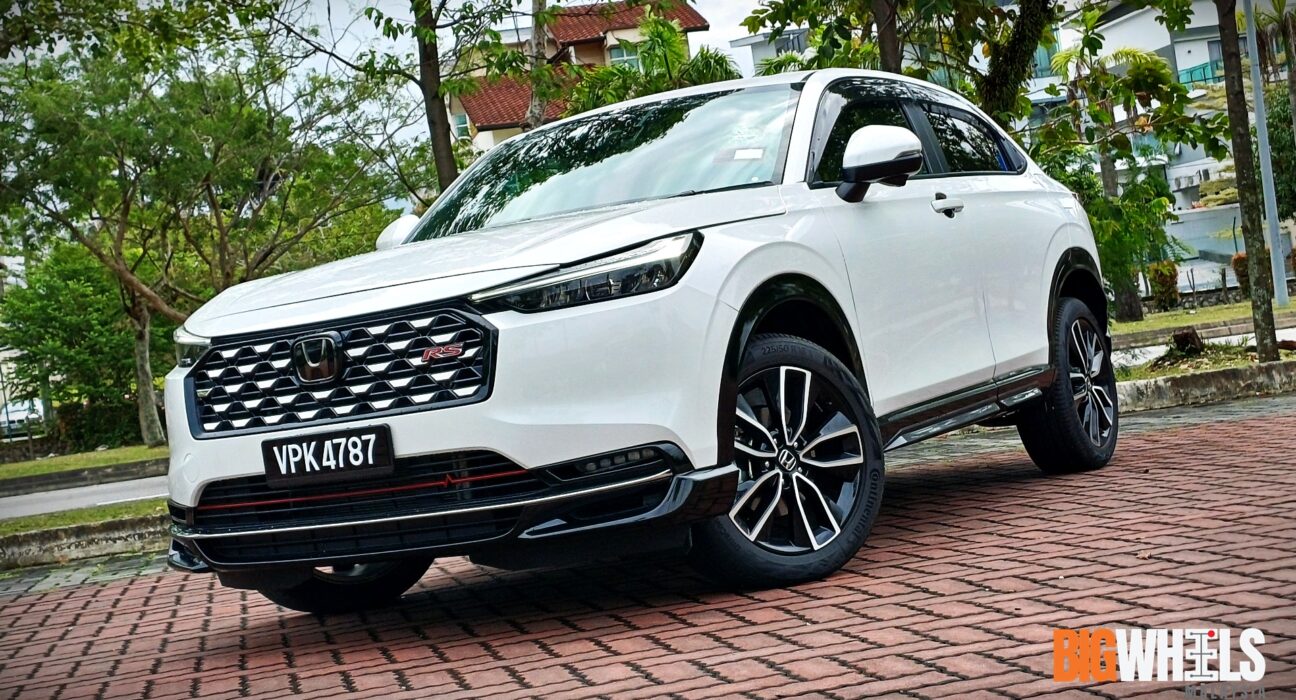After years of dominating Malaysian roads, the Honda HR-V returns with a facelift that reminds everyone why it became a favourite in the first place, but instead of reinventing a winning recipe, Honda sharpened the flavours with better tech, smarter packaging, and subtle styling updates.
The result? A refreshed HR-V that feels more mature, more refined, and more confident — without losing the character that made it a segment benchmark.
Exterior Design

Honda has reshaped the front and rear slightly for 2025, but the overall styling will be divisive. Some will appreciate the cleaner lines and more contemporary touches, but the outgoing model arguably had a more balanced and cohesive look.
One clear improvement comes from the larger LED rear turn signals, which are brighter and more visible — a small upgrade, but a meaningful one in day-to-day safety.
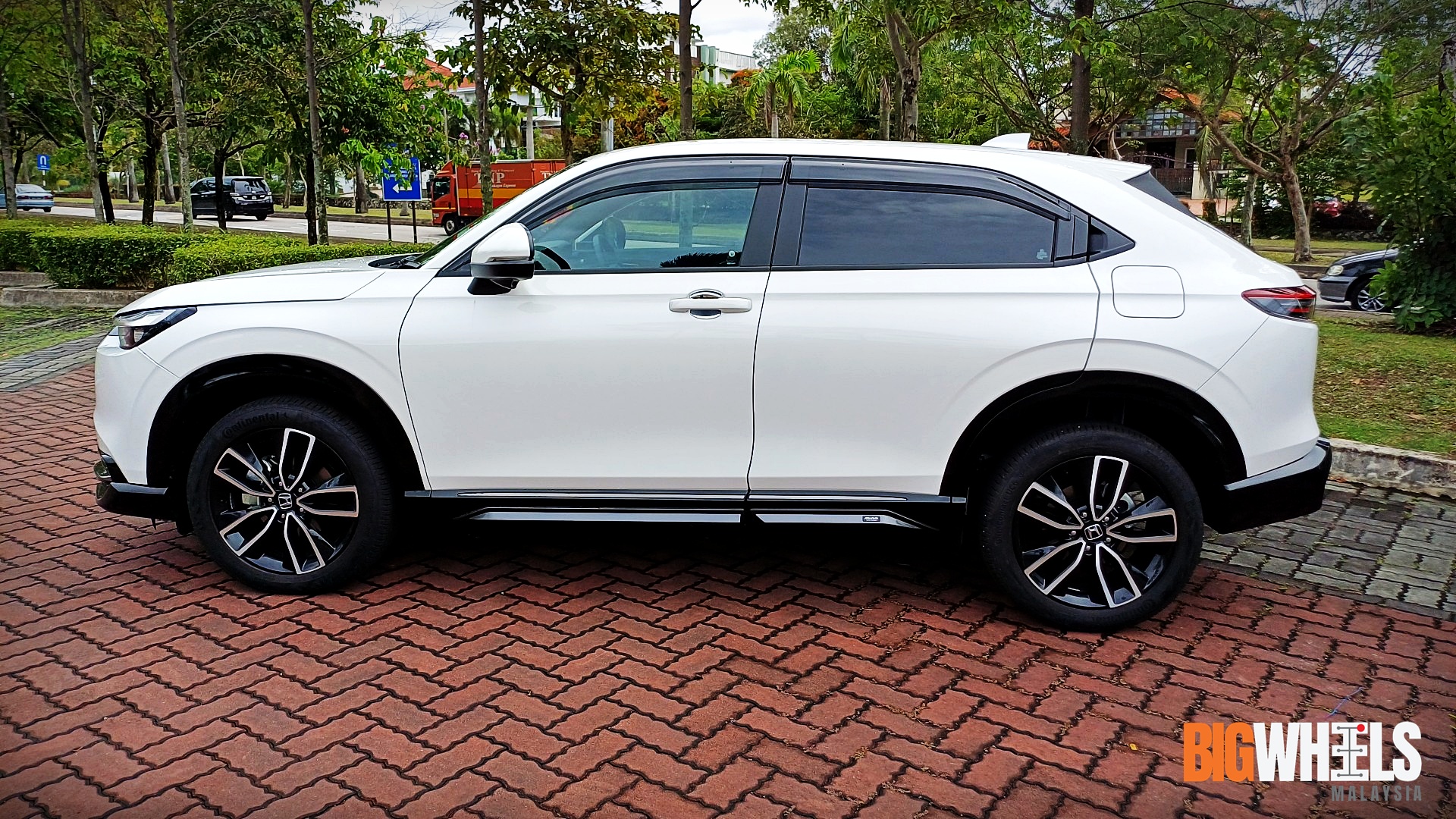
Otherwise, the HR-V is still recognisably an HR-V. It’s not dramatically better-looking, just refreshingly updated.
Powertrain & Performance
Priced at RM143,900, the HR-V RS e:HEV here continues with Honda’s proven 1.5-litre e:HEV hybrid system combining an Atkinson-cycle inline-four with twin electric motors. Total system output remains at 131 PS and 253 Nm of electric-driven torque, delivered through the unique e:HEV arrangement where the electric motor does most of the driving while the engine steps in for higher-speed efficiency.

While the figures aren’t designed to impress on paper, the real-world drive is what makes this system shine. Instant electric torque gives the HR-V a smooth and confident shove at city speeds, helping it feel quicker than the output suggests.
The sprint to 100 km/h hovers in the low-10-second range, but more importantly, the HR-V responds rapidly when you need to slot into gaps or overtake on a two-lane road.

Fuel consumption is equally strong — most Malaysian owners comfortably achieve between 4.5–5.5 L/100 km depending on traffic and driving style. On longer, steady highway runs, the engine’s lean-burn operation keeps consumption impressively frugal.
Refinement remains a major strength too: transitions between EV drive, hybrid drive, and engine drive are almost seamless, and the cabin remains quieter than most rivals in this class.
Ride & Handling
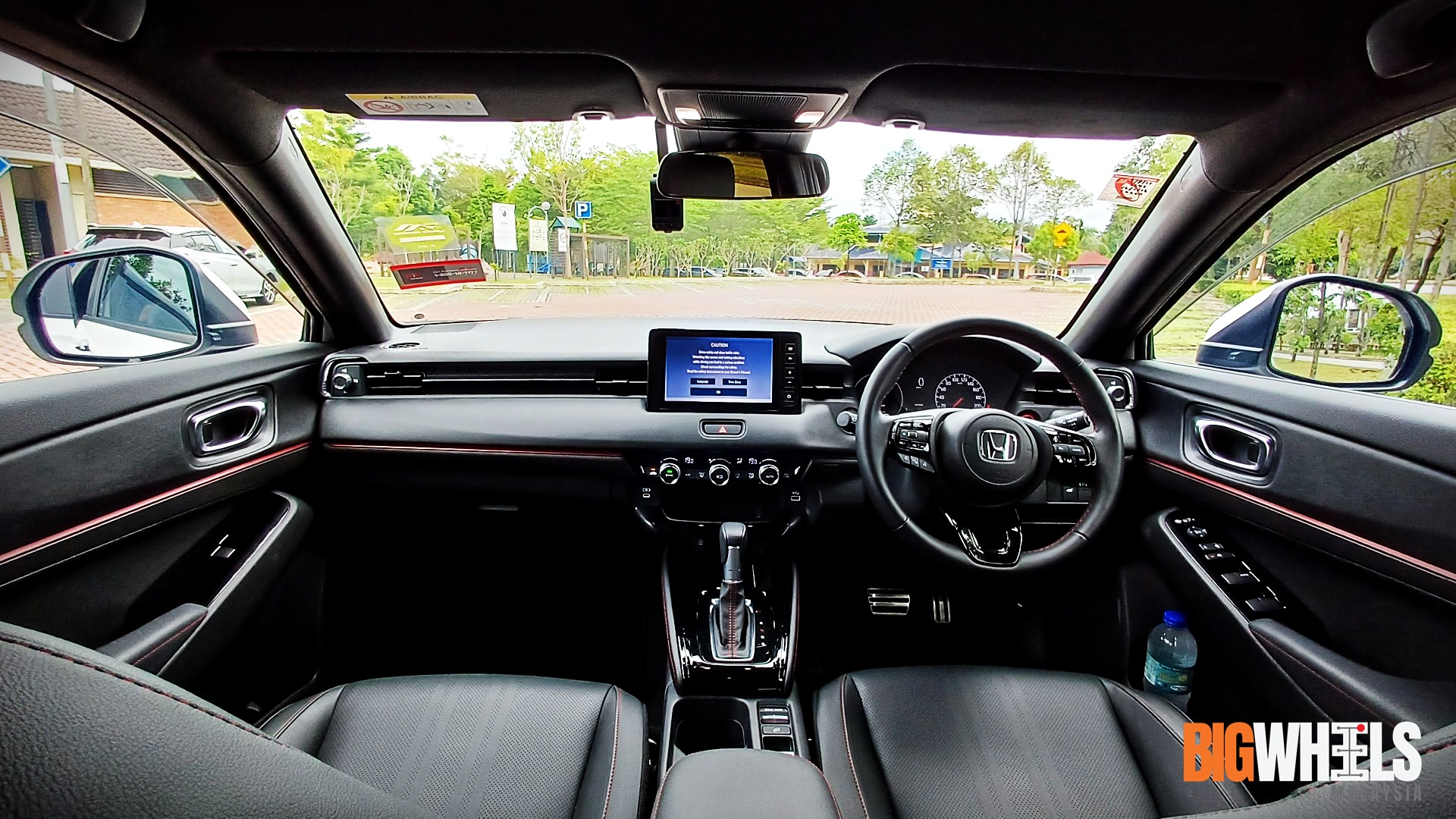
One of the HR-V’s most underrated strengths is how well it drives. The steering is light but precise, the chassis is taut without being harsh, and the body control is closer to a hatchback than a tall SUV.
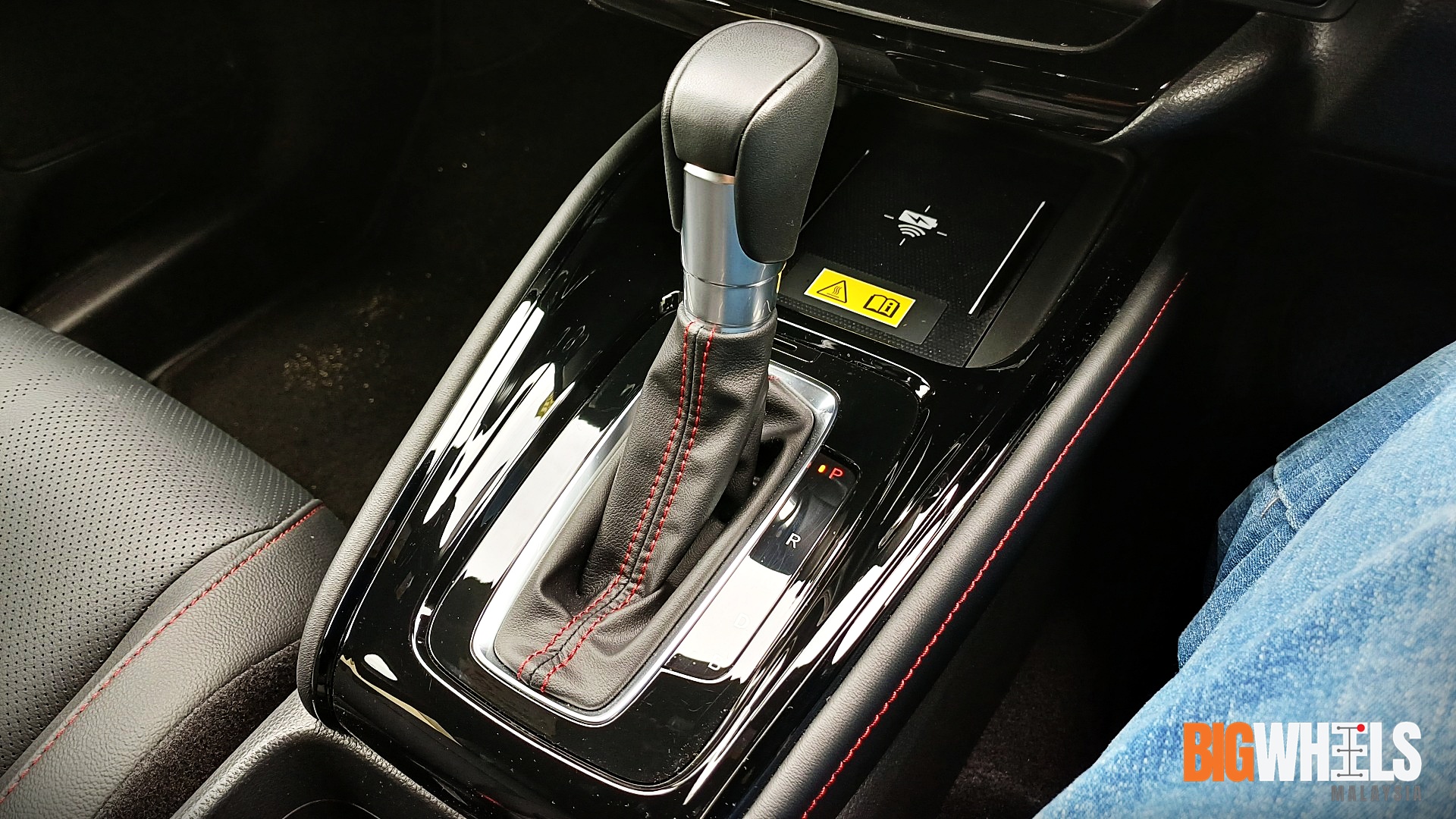
That confidence and composure remain unchanged in the facelift, and that’s a good thing — very few rivals in the segment, hybrid or otherwise, deliver this blend of stability and agility.
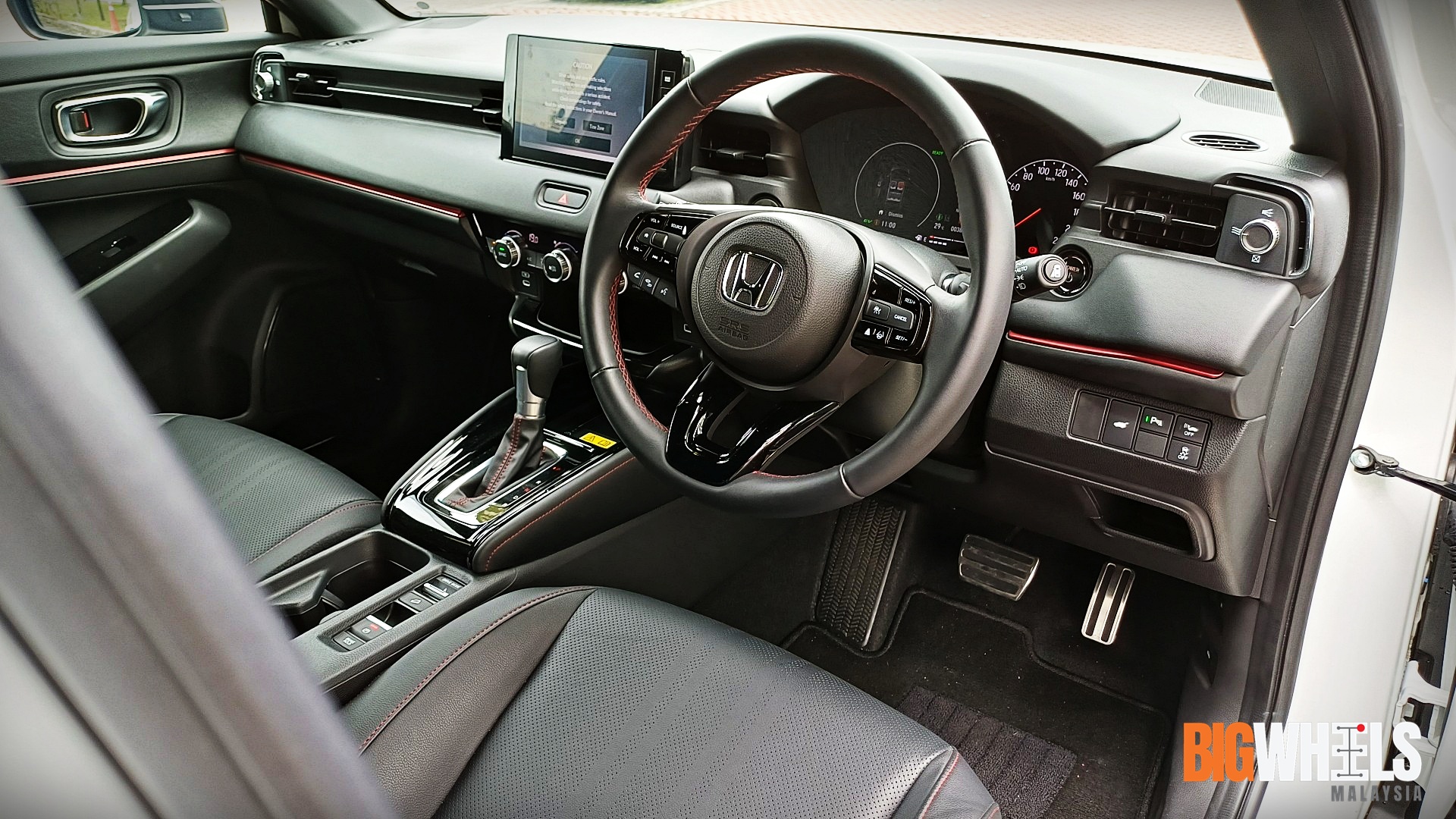
This is exactly where the HR-V pulls away from rivals like the Corolla Cross Hybrid and the Jaecoo J7 PHEV, which are comfortable and predictable but lack the same level of feedback and responsiveness. The Corolla Cross tends to feel more utilitarian and softly tuned, while the HR-V genuinely enjoys being hustled along a winding road.
Interior & Features
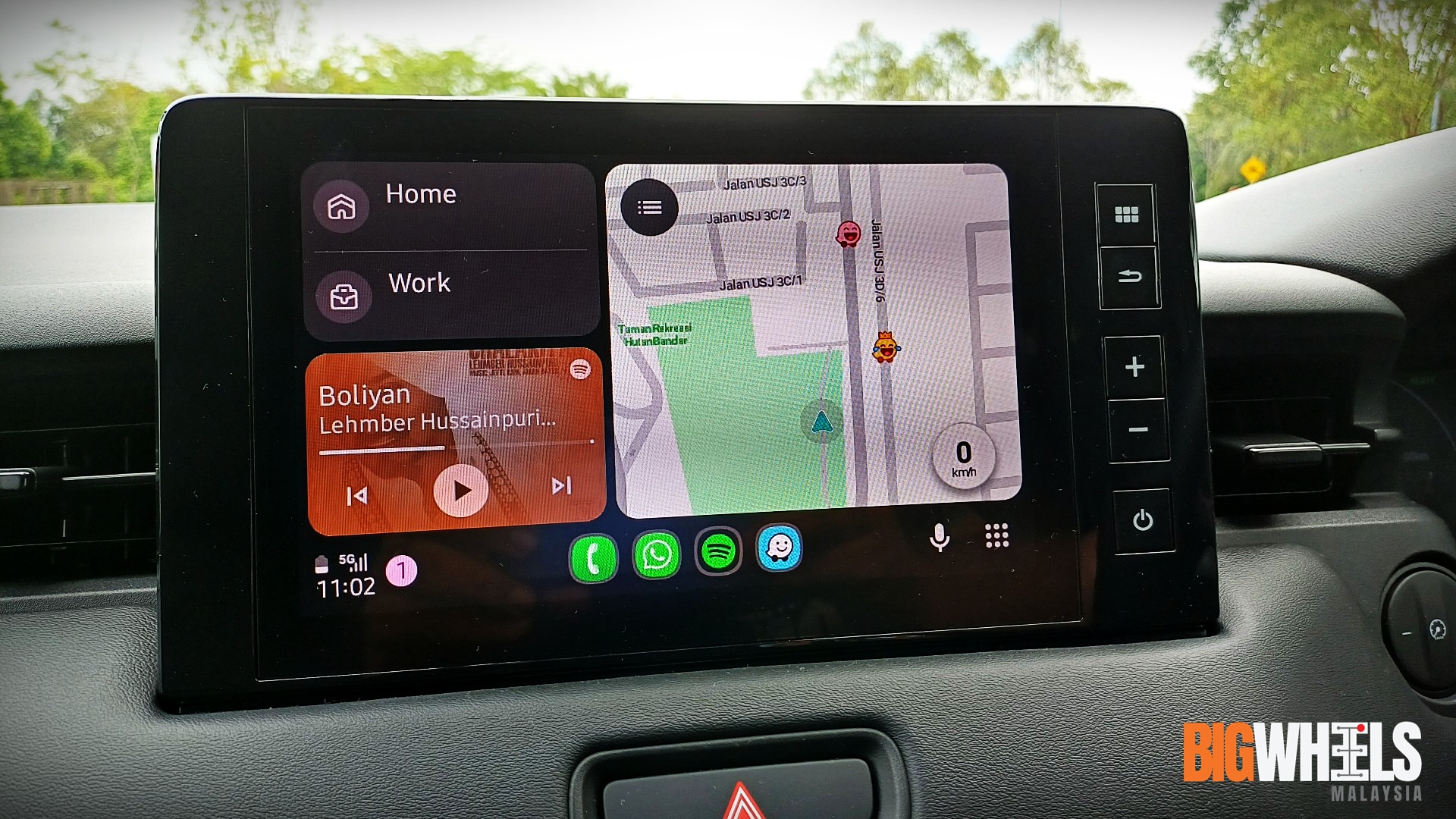
The new slim floating central display immediately modernises the dashboard. More importantly, Honda finally added wireless Apple CarPlay and Android Auto, two features buyers have been asking for since launch. The interface is cleaner, loading times are snappier, and the wireless functionality declutters the cabin noticeably.
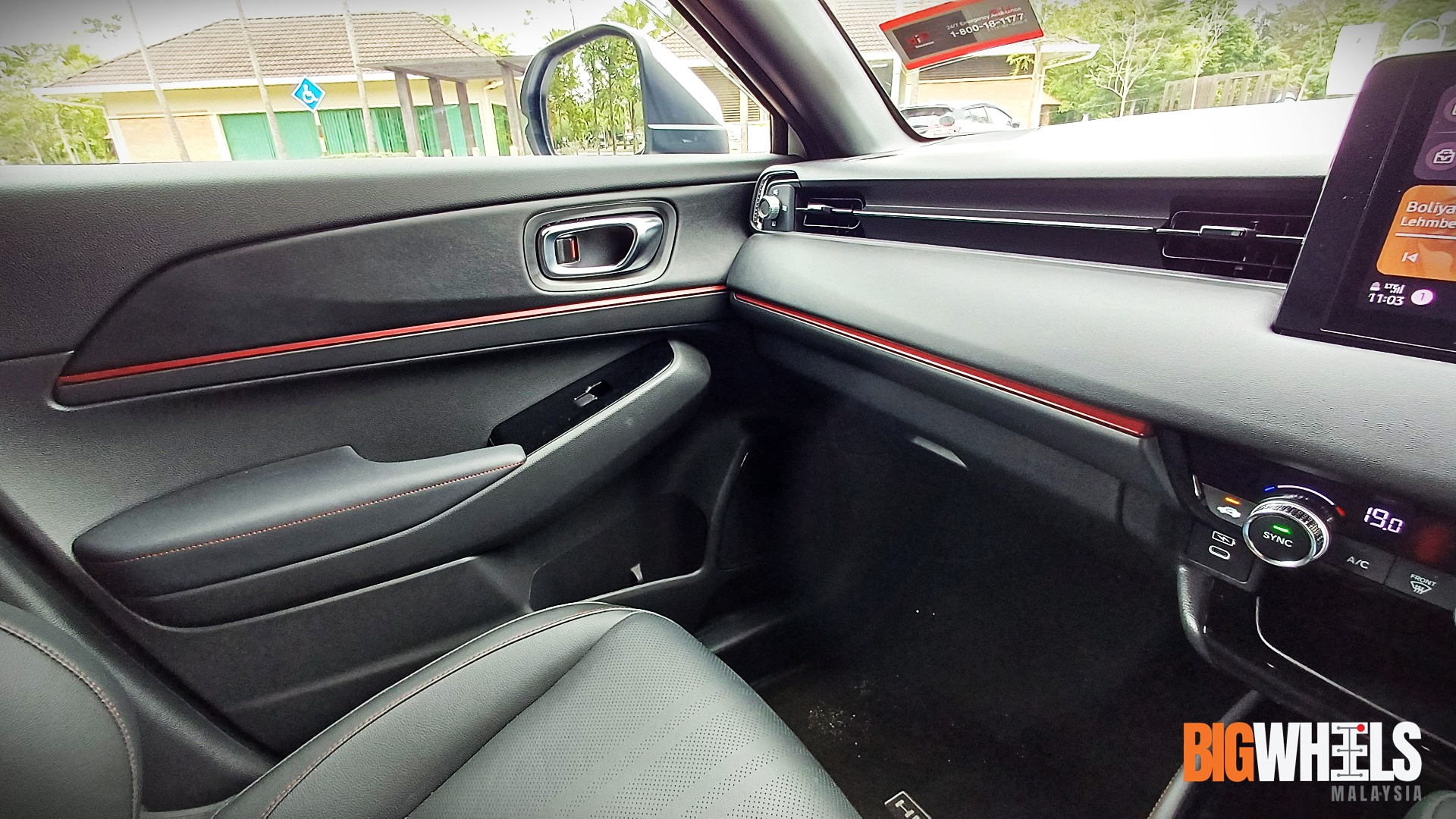
While the new red trim that runs along the dashboard and door panels that replace the previous grey bits give the RS variant a sportier feel, the overall build quality remains one of the best in the class — materials feel solid, surfaces are well-damped, and everything operates with the slick consistency Honda is known for.

The standout feature remains the Ultra (Magic) Seats at the back. No competitor offers the same level of interior packaging flexibility. Whether it’s tall plants, bicycles, or bulky boxes, the HR-V’s rear seat folding modes make it far more practical than its footprint suggests.
How the HR-V Compares to the Competition
When positioned against its closest rivals, the Honda HR-V RS e:HEV continues to stand out as the more complete and polished SUV in the segment. Whether the comparison is with the familiar Toyota Corolla Cross Hybrid or the fast-rising Chinese contenders like the Jaecoo J7 PHEV, the HR-V consistently proves that real-world refinement and engineering depth matter more than headline numbers.

Take the Corolla Cross Hybrid, for instance. It remains a dependable option for buyers who value reliability and fuel efficiency above all else. Yet, in day-to-day use, the HR-V simply feels better thought out.
Honda’s Ultra Seats deliver unmatched versatility, offering multiple cargo and passenger configurations that the Corolla Cross cannot replicate. The HR-V’s cabin also feels airier and more intelligently packaged, giving occupants a more spacious impression.
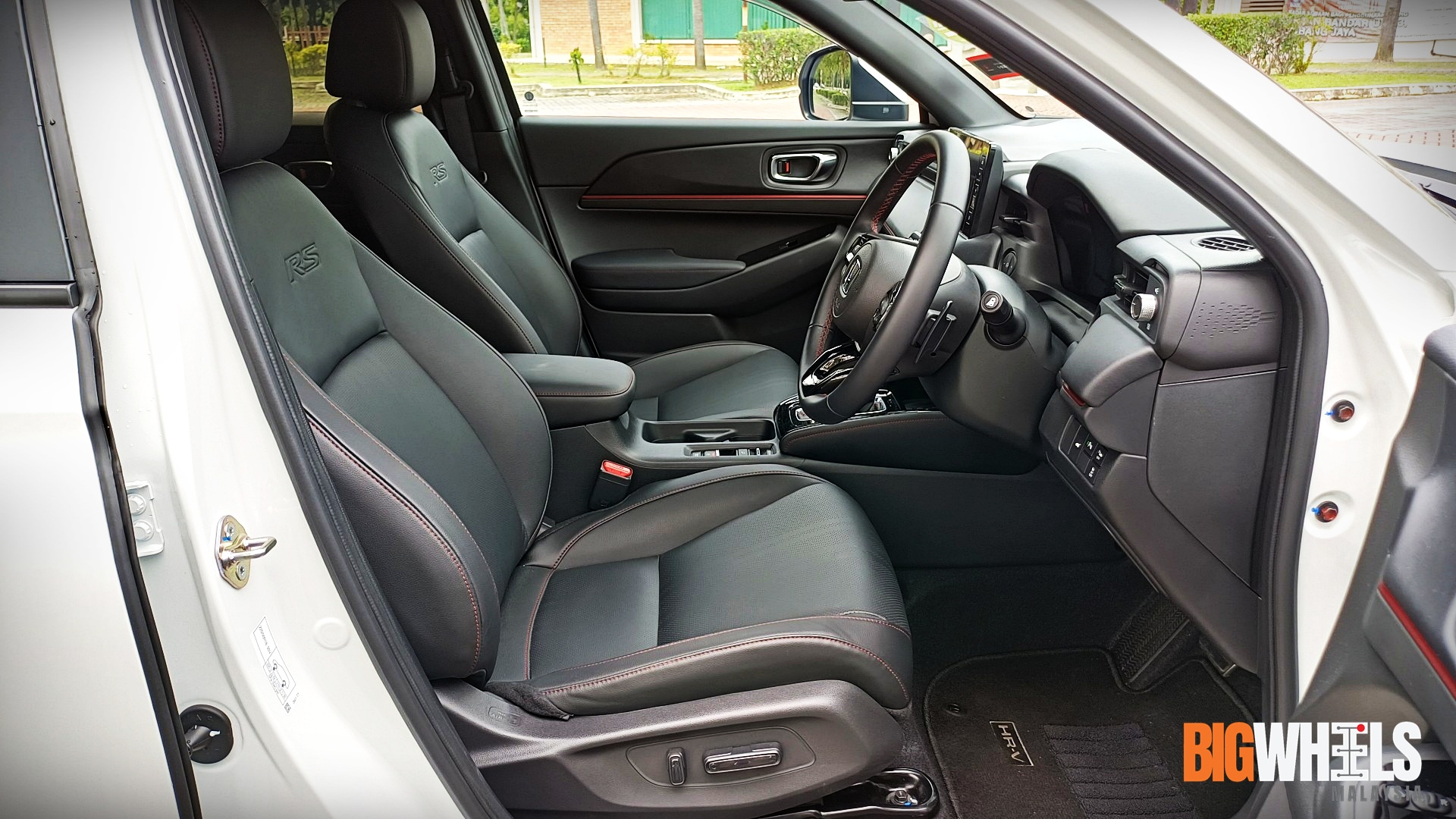
Interior quality further emphasises the difference. The HR-V’s dashboard design, touchscreen integration, and material choices feel more cohesive and premium. Toyota’s cabin is sturdy but visually plainer, lacking the same level of integration and finesse.
On the road, the Honda also pulls ahead with sharper handling, quicker steering response, and better body control. The Corolla Cross leans heavily toward comfort, but does so at the expense of the agility and driving engagement that the HR-V offers as standard.

Even Toyota’s respected hybrid system has its limitations. While highly efficient, it suffers from more noticeable engine drone under load, especially during hard accelerations. Honda’s e:HEV setup, with its emphasis on electric drive in low- and mid-speed conditions, delivers smoother transitions and quieter operation, contributing to a more refined hybrid experience.
The same story plays out when the HR-V is compared with newer Chinese challengers like the Jaecoo J7 PHEV. On paper, the J7 PHEV looks impressive with strong power figures, large dual displays, extensive equipment, and short-range EV driving capability. It’s the kind of SUV that wins the spec-sheet comparison instantly. But specs don’t always translate to a cohesive, polished driving experience—and that’s where the HR-V’s maturity shows.

While the J7 PHEV accelerates strongly in a straight line, its steering lacks the natural weighting and predictability that the HR-V offers. Honda’s chassis tuning also shines, delivering a smoother, more controlled ride across Malaysia’s varied road surfaces.
The J7’s suspension can feel busier, with less composure over bumps or uneven tarmac. Cabin refinement is another area where the HR-V clearly leads, offering lower noise levels and smoother drivetrain behaviour, whereas the J7’s hybrid transitions can feel abrupt.
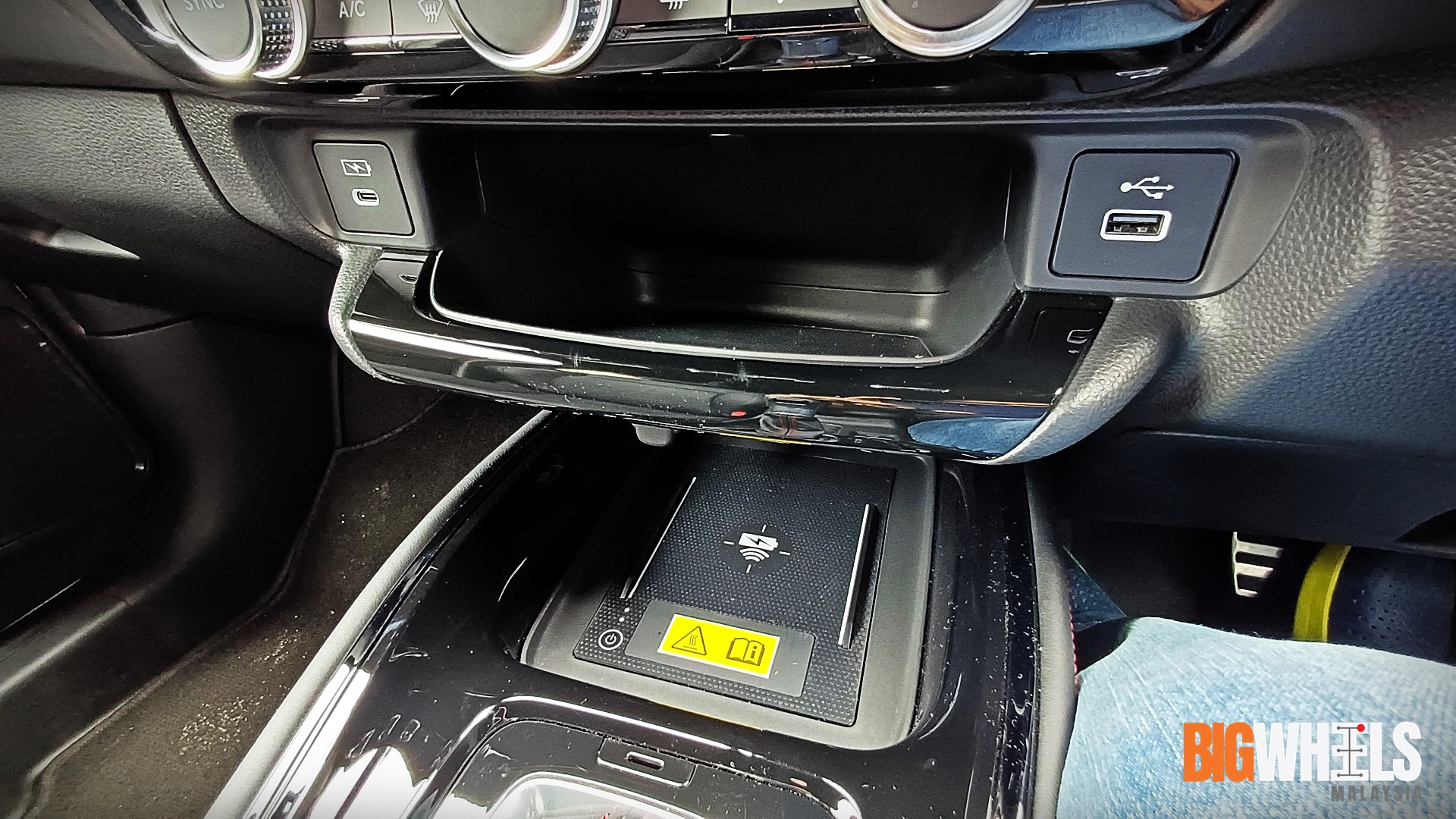
Long-term assurance further tilts the balance. Honda’s hybrid technology is proven globally over many years, giving buyers confidence in durability and ownership costs. The J7 PHEV, despite its promising technology, is still too new to establish a real track record—making long-term reliability more of an unknown.
In short, while both the Corolla Cross HEV and Jaecoo J7 PHEV have their strengths—one in reliability and efficiency, the other in features and performance—the Honda HR-V is the SUV that consistently delivers where it truly counts: practicality, refinement, driving confidence, and long-term peace of mind. Among today’s hybrid and hybrid-adjacent rivals, the HR-V remains the benchmark many are still trying to match.
Verdict
The 2025 Honda HR-V e:HEV RS doesn’t reinvent the nameplate, but it didn’t need to. The facelift adds just the right touches – a tidier floating display, wireless smartphone integration, a more practical interior, and improved rear lighting.
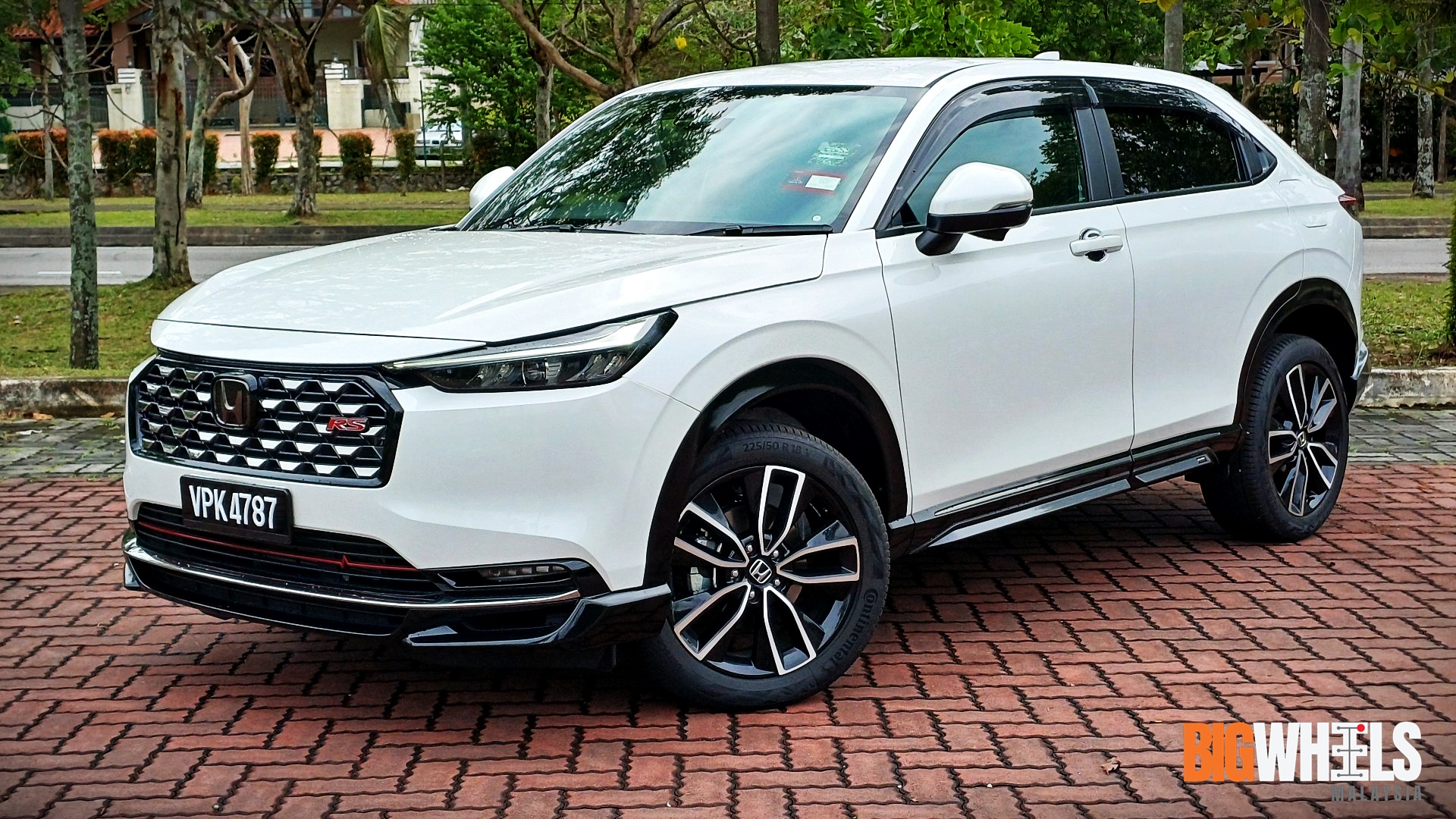
More importantly, it retains everything that has kept the HR-V at the top of its segment, such as the clever rear-seat versatility, excellent handling, strong real-world fuel economy, and Honda’s hallmark reliability.
Against the Corolla Cross Hybrid, it remains the better-rounded, better-driving SUV. Against the flood of high-spec Chinese PHEVs, it still feels more cohesive and better engineered. In short, the 2025 HR-V RS is proof that sometimes the best upgrades are not big changes — but the right ones.

